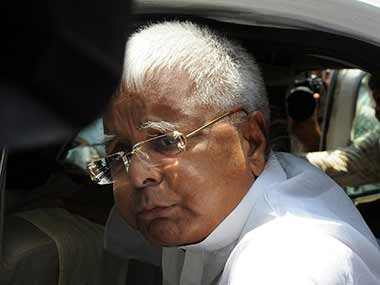Editor’s Note: This article has been republished in the light of a special CBI court convicting Lalu Prasad Yadav and 15 others in a case related to the 1996 fodder scam. This article was originally published on 9 May, 2017. The Supreme Court had ruled in May that the former chief minister has to face separate trials in each of the cases and if found guilty may be punished separately. The fodder scam, which has been stirred up from time to time and has been in news for over 21 years now. Here’s all you need to know about the case. The petty forgeries and small scale fraudulent transactions, that would go on to become a Rs 100-crore scam and unseat an incumbent chief minister, predates the Lalu-era in Bihar. It was first sniffed out in 1985 by the then CAG TN Chaturvedi, who noticed that monthly accounts submission from Bihar treasury were always delayed. [caption id=“attachment_2459286” align=“alignleft” width=“380”]  Lalu Prasad. AFP[/caption] However, those small-scale falsified transactions flourished over the course of years, got systemised, and snowballed into a Rs 945-crore scam. Here is all you need to know about the multi-crore scam, one of the early on cases of large-scale corruptions. What is the case all about? The case is regarding large-scale embezzlement of government funds, made by producing fake bills to substantiate payments that were never made. The scam took its notorious name from the fact that it was rooted in the Animal and Husbandry department of Bihar government and the fraudulent transactions were made in the name of procuring cattle feed over a period of 20 years, under successive regimes. After the 1985 incident, the case resurfaced in a big way for the first time in 1996 when the state finance secretary VS Dubey started looking into the matter and ordered inspections across all districts. A massive raid on the Animal Husbandry Department (AHD) at Chaibasa uncovered a stash of documents showing illegal withdrawals from the state treasury, according to a report in Outlook. But before this, subsequent raids on various AHD officials were already being conducted, quietly and away from media glare, adding straw by straw to mound that went on to be known as the fodder scam. An India Today report from the time states that a slew of I-T raids in 1993 revealed that nearly 80 AHD officers and suppliers had accumulated property worth Rs 25 crore but before any action could be taken, the I-T officer leading the systematic raids to uncover the scam was transferred and the case was put on the backburner. Before this, in February 1992, an AHD official was found in possession of over Rs One crore in cash at Ranchi airport. Then in 1994, another discovery of a fraudulent transaction was made. The Vigilance Department found that the regional AHD director at Dumka, withdrew some 50 lakh rupees with false bills. However, the assembly’s Public Accounts Committee (PAC) chairman Jagdish Sharma, a supporter of former Bihar chief minister Jagannath Mishra, also an accused in the case, intervened claiming that the PAC was already investigating such matters and the Vigilance Department should not proceed further. The matter was dropped.
Now the case spans across 64 cases and over 56 accused, including top bureaucrats at the time, politicians and government employees.
Where does Lalu Prasad Yadav come into the picture? As the issue started gathering heat as the scam unravelled, BJP state unit chief Sushil Modi filed a PIL in the Patna High Court in 1997 demanding a CBI enquiry in the case. The same year, the investigation was handed over to the CBI and hence started Lalu’s worst nightmare and a longstanding episode with the CBI. “A large amount of money was withdrawn from the government’s treasury. In short, it was a loot of government’s money by the government’s officials backed by the political leadership. About Rs 950 crore was looted by government officials in ten years. It was a huge thing for all of us at that point of time,” Rakesh Asthana, the famed CBI’s superintendent of police who uncovered the scam and formally started prosecution against a sitting chief minister, according to Rediff.com. In 1997, the CBI formally requested the Governor to publicly start prosecution proceedings against the then Bihar chief minister. Amid growing public pressure, Lalu had no choice but to step down, but not before outsmarting his opponents by installing his wife Rabri Devi as the chief minister. Rabri’s surprise installation as the Bihar chief minister is, till date, quoted as one of the most clever political manoeuvres.
As things stand today, of the 64 cases arising from the scam, Yadav has been named as accused in six cases and he has already been convicted in one of the case involving fraudulent withdrawal of Rs 37.70 crore from Chaibasa treasury, which now falls in Jharkhand between period 1 April, 1994 to 31 January, 1995.
The other cases which are to be completed against him are related to the treasuries of Chaibasa, Doranda in Ranchi involving Rs 139.39 crore, Dumka (Rs 3.31 crore) and Patna.


)



